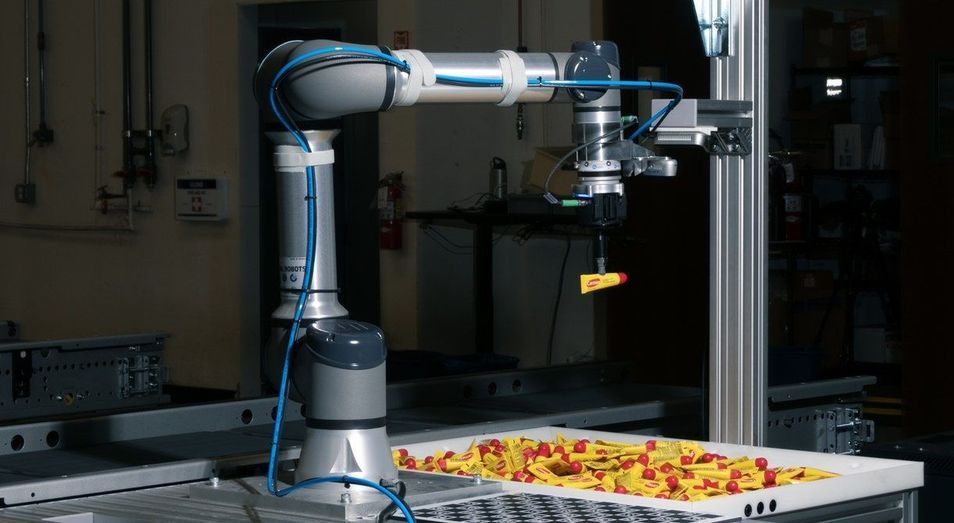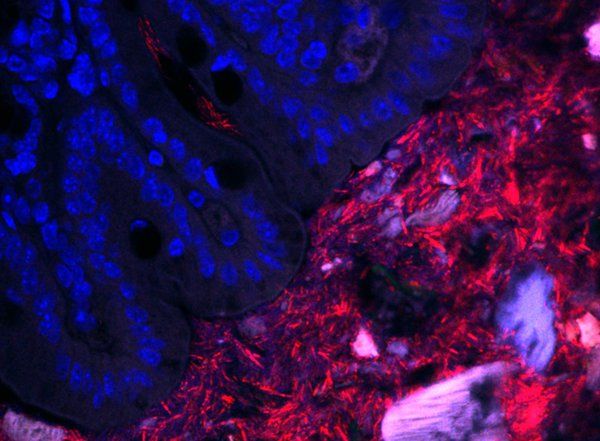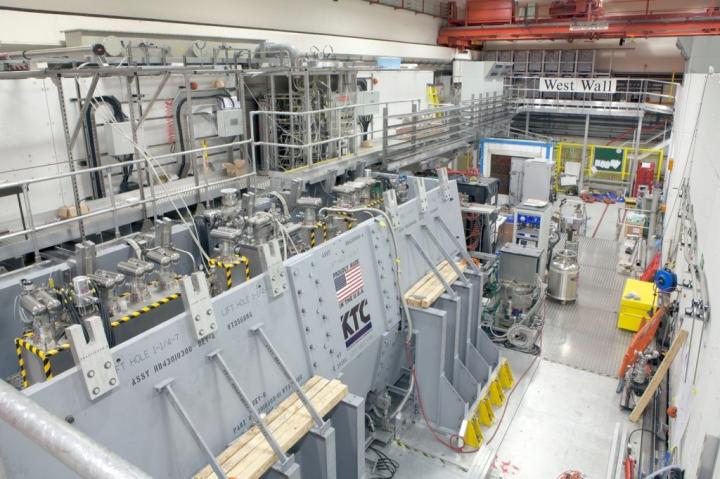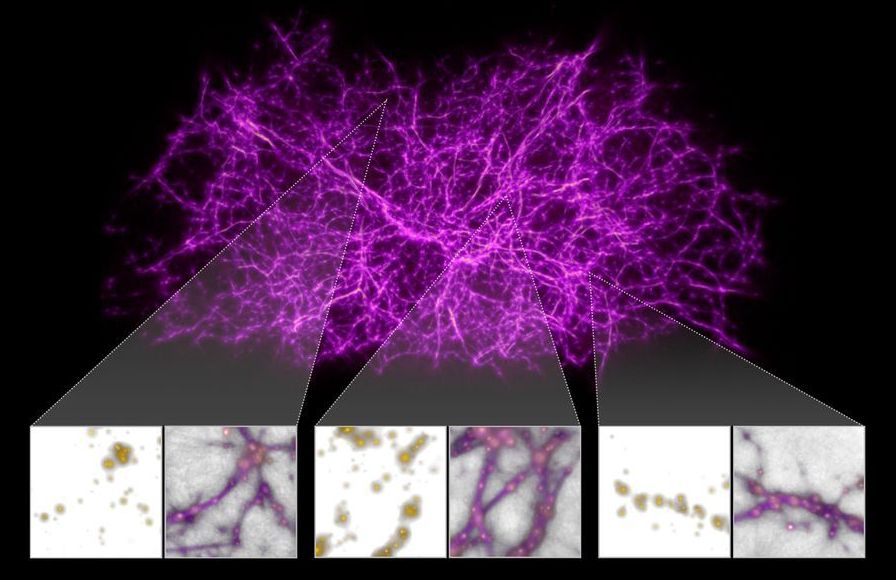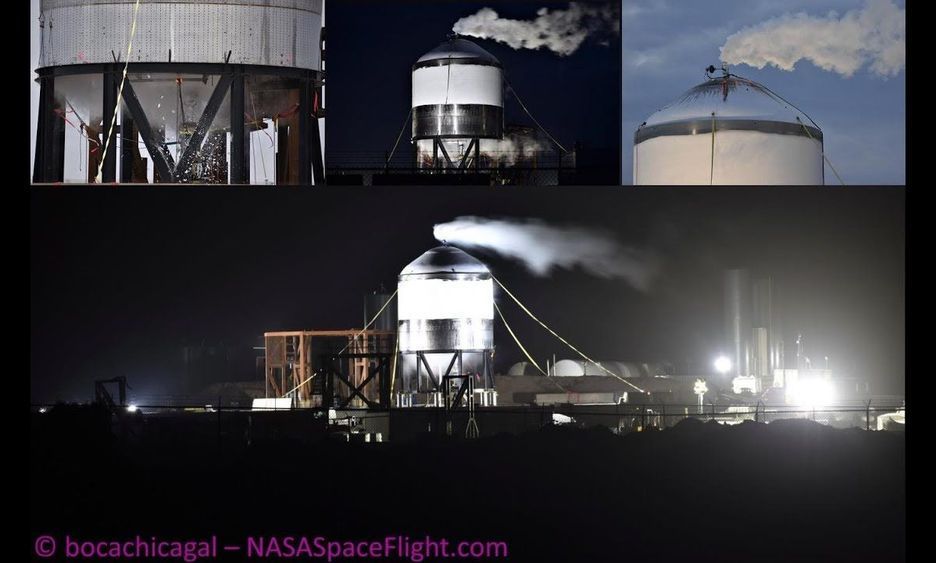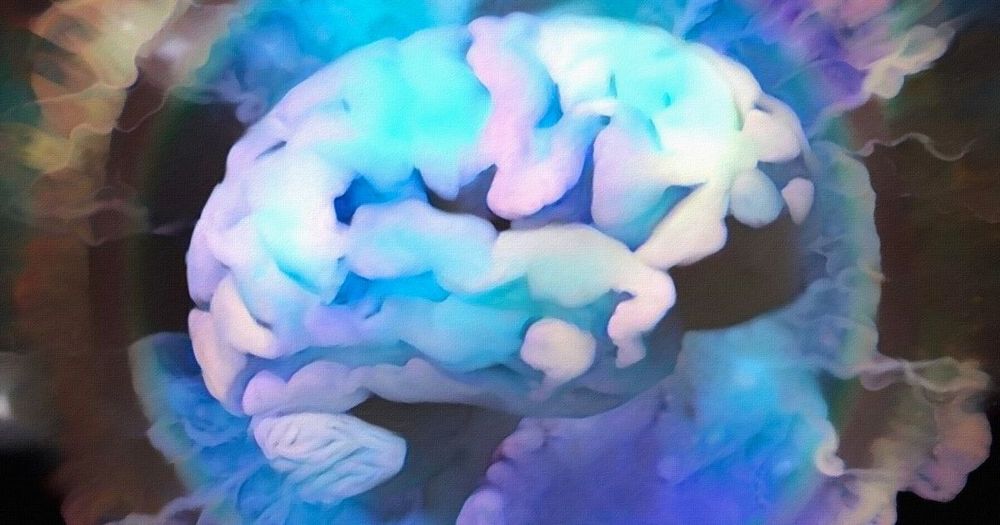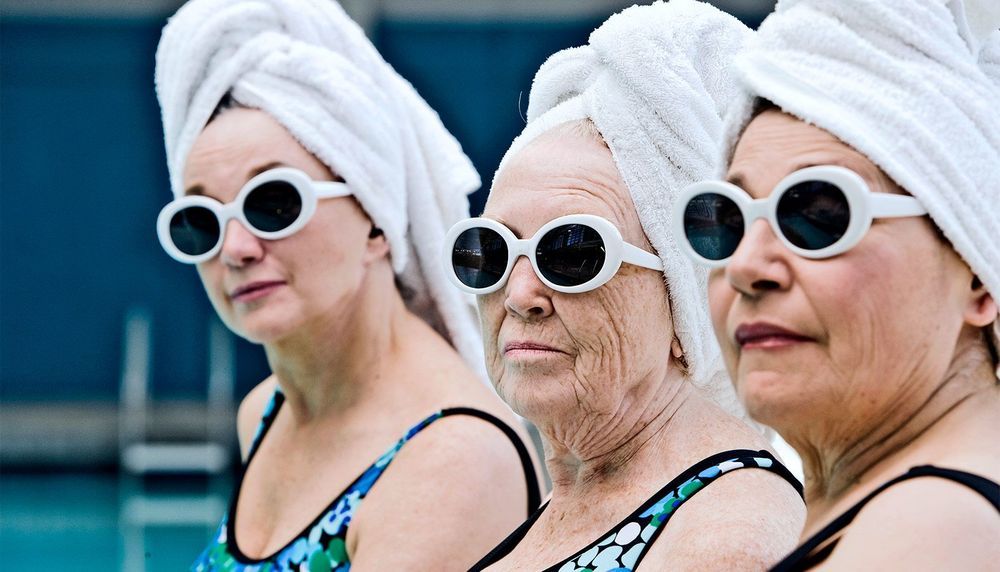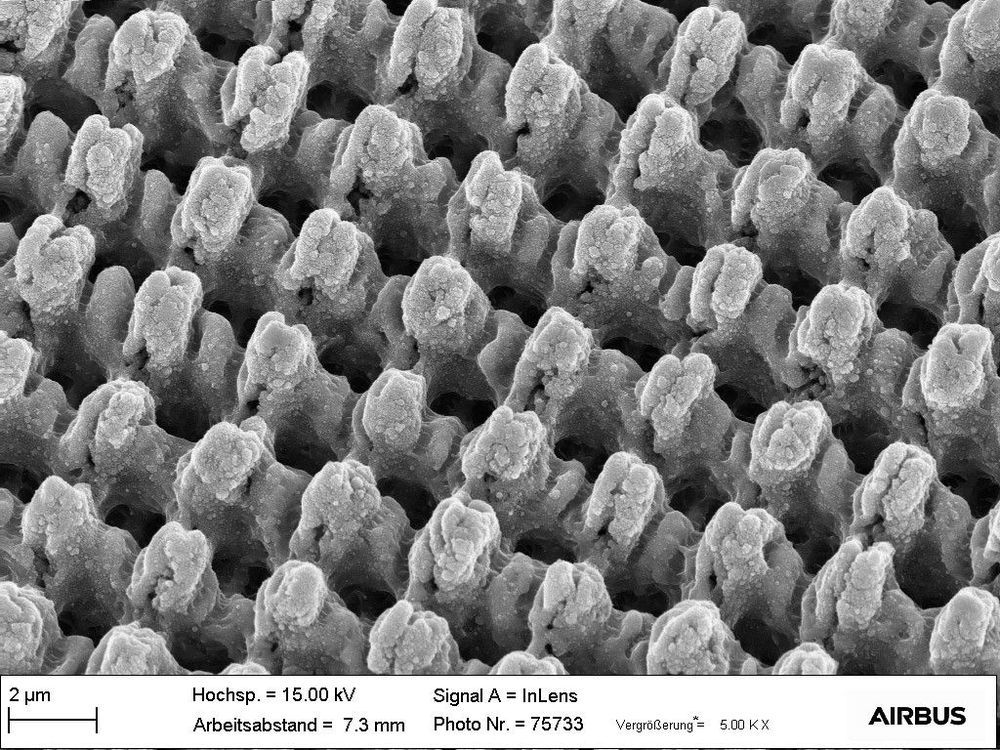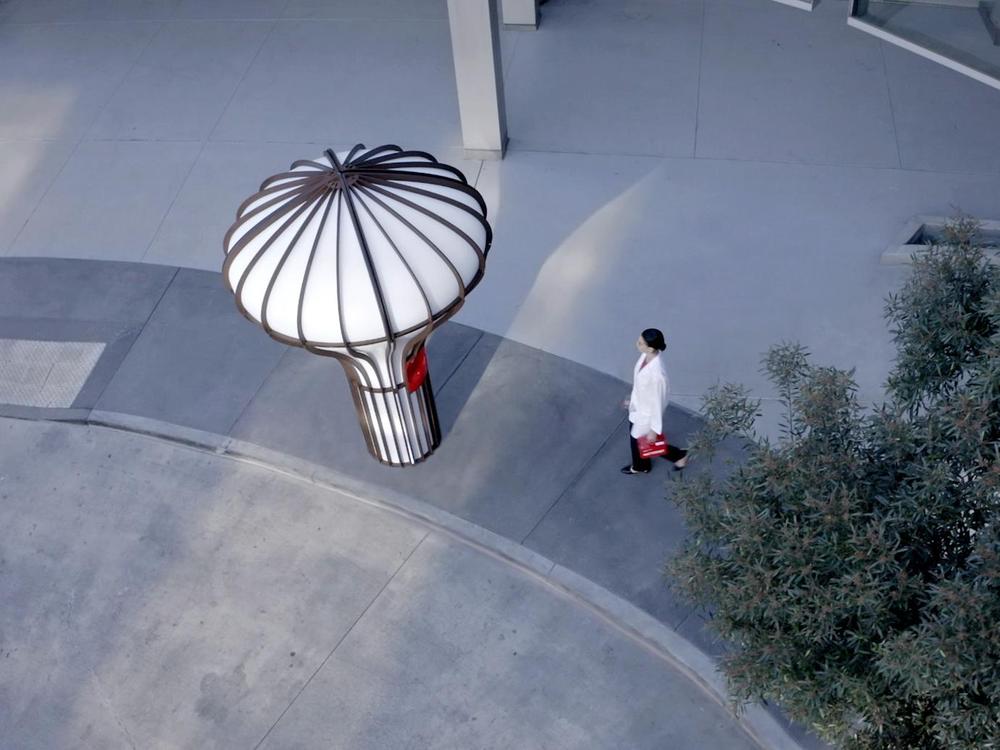Vicarious, a secretive 10-year-old startup backed by Mark Zuckerberg, Elon Musk, and Jeff Bezos, reveals its progress and an initial customer.
Over many years, the Mazmanian laboratory has described how Bacteroides fragilis in the gut produces beneficial molecules that protect mice from inflammatory bowel disease and autism-like symptoms. Like a densely populated city, a vast majority of the B. fragilis in the gut live within the central part of the intestinal tube, called the lumen. However, the Mazmanian laboratory discovered in 2013 that some B. fragilis reside in the bacterial equivalent of small towns, nestled into microscopic pockets within the tissue walls lining the tube. These sparse populations are protected by mucus and are largely unaffected by antibiotics, suggesting that they act as population reservoirs that ensure long-term colonization.
“For humans, where we live can dictate how we behave—for example, a person living in a city likely has a different everyday life than a person living in a small rural community,” says former graduate student Gregory Donaldson (PhD ‘18), the first author on the new paper. “For the bacteria that we study, the intestines represent their entire world, so we wanted to know how differently they behave depending on how far away from the intestinal surface they are.”
Though they may live in different habitats within the gut, these B. fragilis populations all have the same genetic code. What may differ, however, is how they express those genes—is a bacterium expressing a gene for replication and division, for example, or perhaps for an enzyme that digests food? Donaldson aimed to measure and compare gene expression in these two populations (intestinal wall tissue and lumen of the gut) to determine what, if any, differences were seen.
This posed a technical challenge. Because the population of bacteria living in the tissue lining is so small, their genetic material becomes obscured during sequencing by the genetic material of the mouse cells, which is far more abundant than that of the bacteria. Though mice and bacteria are distinctly different genetically, sifting through the mouse RNA to find the bacterial RNA is like finding a needle in a haystack.
Here, a crucial collaboration with Ashlee Earl of the Broad Institute made the research possible. Earl and her team led the development of a new technique, called hybrid selection RNA-sequencing, designed to fish out the elusive strands of bacterial RNA like using a magnet to search for the needles in a haystack.
An international team of researchers, affiliated with UNIST has for the first time succeeded in demonstrating the ionization cooling of muons. Regarded as a major step in being able to create the world’s most powerful particle accelerator, this new muon accelerator is expected to provide a better understanding of the fundamental constituents of matter.
This breakthrough has been carried out by the Muon Ionization Cooling Experiment (MICE) collaboration, which includes many UK scientists, as well as Professor Moses Chung and his research team in the School of Natural Sciences at UNIST. Their findings have been published in the online version of Nature on February 5, 2020.
“We have succeeded in realizing muon ionization cooling, one of our greatest challenges associated with developing muon accelerators,” says Professor Chung. “Achievement of this is considered especially important, as it could change the paradigm of developing the Lepton Collider that could replace the Neutrino Factory or the Large Hadron Collider (LHC).”
Using data from the Hubble Space Telescope’s Cosmic Origins Spectrograph, the team was able to observe the distinctive absorption signature in the spectrum of light that passes through it, and the sight-lines of hundreds of distant quasars that pierce the volume of space occupied by the SDSS galaxies, says the university.
This lowly slime mold does a good job of characterizing the large-scale structure of the Universe over a wide range of scale, Burchett told me.
“I see how it works from a mathematical and [topological] perspective, but that doesn’t diminish my continued amazement that the slime mold-inspired method handles this difficult problem so elegantly and efficiently,” Burchett told me.
SpaceX’s newest prototype of its Starship Mars-colonizing vehicle just passed a crucial pressure test, potentially paving the way for more ambitious trials in the near future.
Starship version SN2 survived a cryogenic pressure test late Sunday (March 8) at SpaceX’s South Texas facilities, company founder and CEO Elon Musk said. You can see a video timelapse of the test from Starship watcher Mary BocaChicaGal here for NASASpaceflight.com.
A new study shows that the effects of aging appear in the brain can appear in your 40s. Cutting carbohydrates may protect you, though.
Overcoming Human Bias
Posted in transhumanism
The IAmTranshuman (ist) web site is about the stories of transhumanists, from professors to artists and everything in between from all walks of life. IAmTranshuman is about helping humanity grow and be more then what we were through the responsible use of technology.
While it’s important to keep the wings of aircraft ice-free, the application of chemical deicers before takeoff can be problematic. German scientists are working on something that could help, in the form of an ice-repelling laser-based treatment for flight surfaces.
As many people will know from firsthand experience, waiting for an airliner to be sprayed with copious amounts of deicer is a hassle, potentially delaying takeoff. What’s more, the chemicals used can be quite expensive, plus they’re typically not very eco-friendly.
In order to allow smaller amounts of deicer to do the same job, some aircraft now incorporate heating elements in key areas of their fuselage, or they use setups that divert hot air from their engines to those same areas. The new system is intended to further minimize the need for deicers, perhaps even making them completely unnecessary.
If drone delivery companies get to shape city streets to their liking, the curbside array of lamp posts, garbage cans and free magazine distribution boxes will be joined someday by docking stations for their aircraft. Matternet on Tuesday unveiled a 10-foot tall kiosk three years in the making that’s designed to safely integrate its medical delivery drones into urban environments — and to drastically reduce the number of employees the startup needs and achieve a breakthrough on costs.
Plenty of companies have developed docking stations for recharging drones and to shelter them when they’re idle. Matternet could be the first to field a system that automatically handles cargo.
After its M2 drone enters through the top and docks, the station loads and unloads payload boxes, swap batteries and assesses the condition of the drone. Medical workers will be able to retrieve and drop off boxes through a hatch after scanning their IDs.
